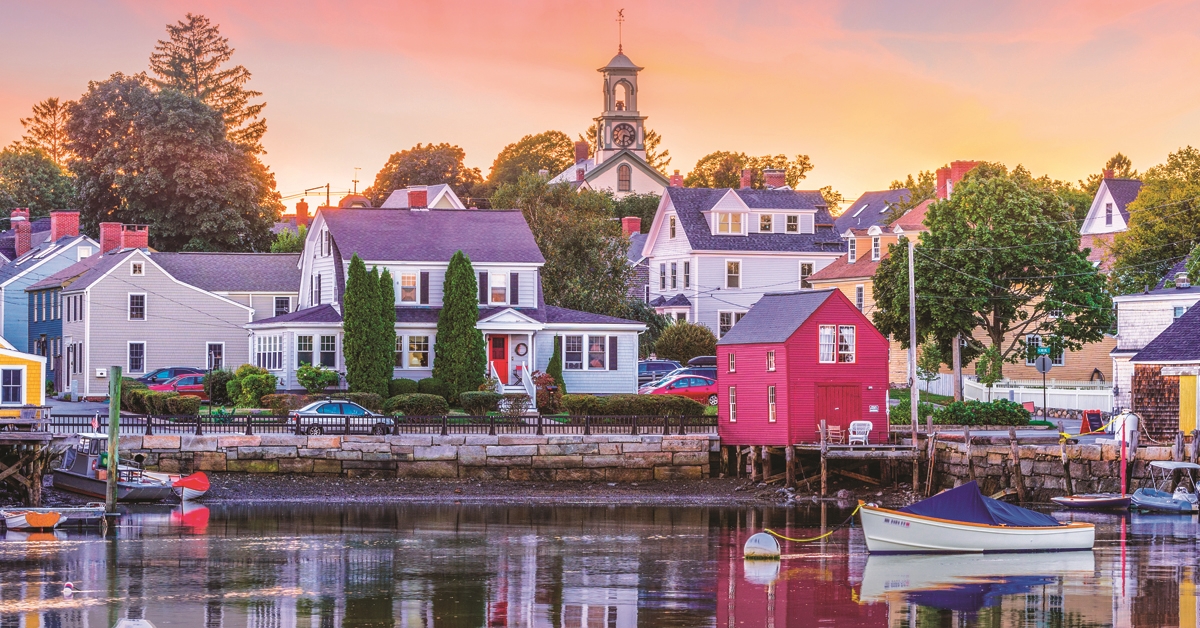Blue crabs off the coast of Maine sound like an oddity, but it’s causing alarm about the effects of climate change throughout the New England Region. Blue crabs, named because of the color of their claws, are more commonly found in the warmer waters of the mid-Atlantic but are starting to be seen in colder waters, including the Gulf of Maine.
The New England states of Maine, Connecticut, Rhode Island, Massachusetts, New Hampshire and Vermont lead the country in rising temperatures, according to the National Oceanic and Atmospheric Administration. These states have seen an increase of 3 to 4 degrees Fahrenheit since the beginning of the 20th century.
The Gulf of Maine is warming at one of the fastest rates of any body of water in the world in the past five years. In the past few years, blue crabs have been seen with more regularity off the coast of the Pine Tree State.
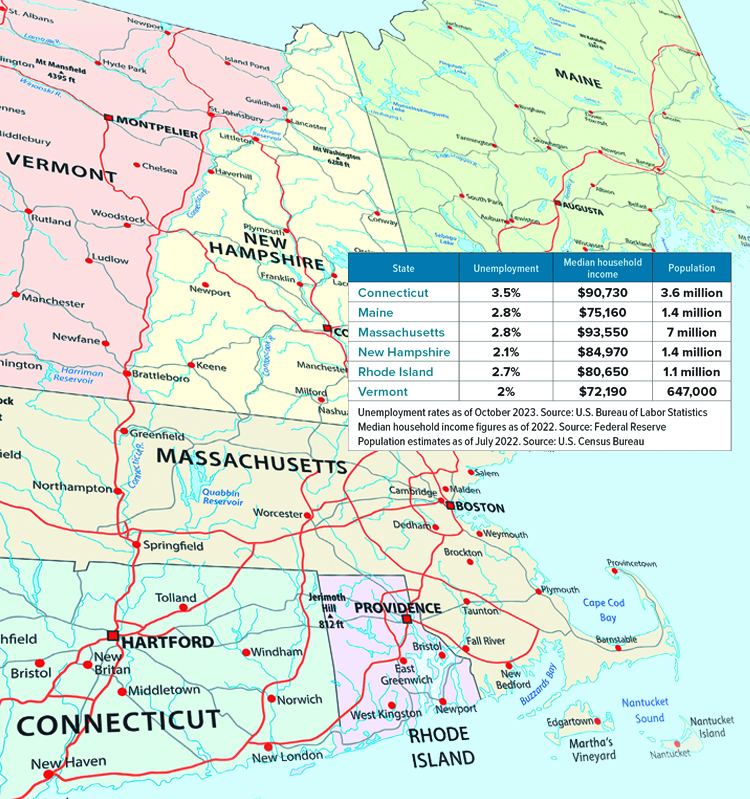
Rising temperatures could take a toll on industries across the region, according to the Climate Reality Project. Fruit farms could be at risk if unseasonably warm spring weather causes trees to bud early, with crops later lost to frost. Ski resorts support about 44,500 jobs in the region and generate about $2.6 billion in annual revenue. Warmer temperatures could mean later openings and earlier closings for resorts, putting stress on the industry.
The New England fishing industry already sustained a 16% decrease in jobs from 1996 to 2017 due to warming waters affecting the supply of Atlantic cod, shrimp and lobster. Dwindling stocks have forced some boat captains to declare bankruptcy.
About 15 million people live in the New England region. Massachusetts ranks as its largest economy. The Bay State had a gross domestic product (GDP) of $691 billion in 2022, good for 12th among all states. Connecticut ranked No. 23 with $319 billion in GDP. Each of the other states in the region ranked in the bottom half of the nation for GDP size, with Vermont coming in at No. 50 with a GDP of $40.8 billion.
Nationwide, the cost of a home is six times higher now than it was in 1980. Led by the Boston metro area, Massachusetts has witnessed a much higher increase over that time, according to an investigation by The Boston Globe. Home prices in The Bay State are 11 times higher now than in 1980. ●
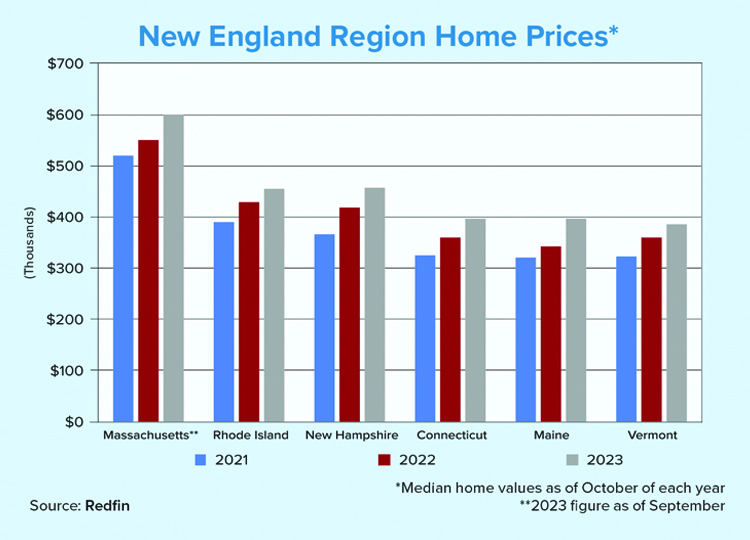
Home prices in the New England Region were showing signs of heating up last year. U.S. home prices rose by 3.7% in August, according to CoreLogic, but prices in New England posted far higher year-over-year gains.
New Hampshire had the biggest increase in the U.S. with a yearly jump of 9.4%, followed by Maine and Vermont at 8.9%. Rhode Island was fourth at 8.4% while Connecticut tied for fifth at 8.1%.
Massachusetts had four of the nation’s 100 most expensive communities ranked by ZIP code, according to RealtyHop report released this past November. A ZIP code in the Back Bay neighborhood of Boston finished at No. 17 with a median list price of $3.7 million. Connecticut had three of the top 100 most expensive ZIP codes. The vast majority of these pricey locations were in California and New York.
What the Locals Say
I’m in the northeast corner of Connecticut in Windham County. Massachusetts and Rhode Island are 10 to 15 minutes away. What’s happened is people are coming from Rhode Island and Massachusetts because they’re finding that they’re going to have more of a chance to buy a home here, even though it’s still competitive.
There were 386 new listings in the county in October 2023 and 277 of them sold right out of the box within seven days. That’s how fast they were going. They call us the quiet corner, but it hasn’t been so quiet. In 20 years of doing this, it was a wild run and it’s still busy. Our numbers are not where they were last year, but they’re still really close. People have cash. I don’t know where it’s coming from. All appraisals are coming in solid. They’re not coming in under asking price. The comparables are still there.
People don’t care about the rate. If they’re older and smarter, they’ve already been through it. They say, ‘When I owned my first home, I paid 13%,’ so it doesn’t bother them.
It comes in spurts. One week, everything’s happening. The next week it slows down. In October, in this little area, we closed 20 loans. That’s pretty good in this market. Once we start seeing rates in the 5% or even low 6% range, people are going to go crazy and start refinancing.

Branch production manager
Revolution Mortgage
3 Cities to Watch
Boston
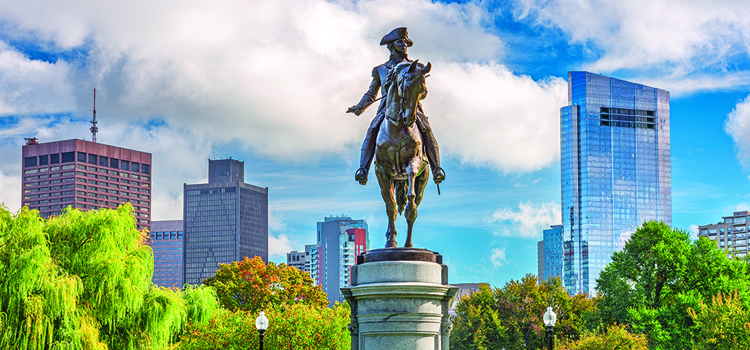
The largest city in Massachusetts continues to struggle in the wake of the COVID-19 pandemic. As of spring 2023, foot traffic in the two ZIP codes that make up the city’s Financial District was down 48% from pre-pandemic levels in 2019, according to University of Toronto researchers. And the regional office vacancy rate stood at 19.1% in January 2023, the highest in 20 years, according to The Boston Globe.
Manchester
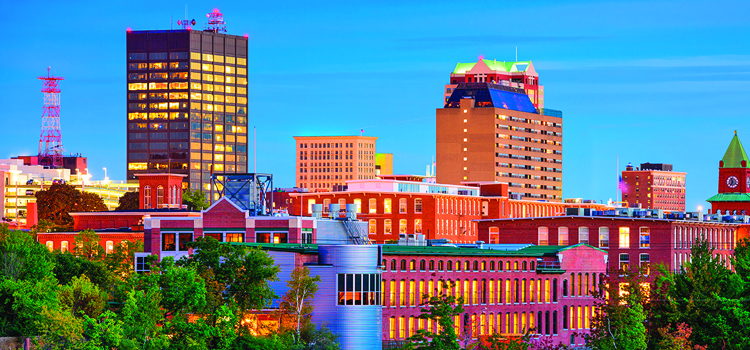
This area was originally called Harrytown before being renamed as Manchester in 1810. Affordable housing is a top issue for New Hampshire, but the state is hampered in providing it. Much of the land that allows for single-family homes is already built upon. In Manchester, there are concerns that changes to density, such as allowing for accessory dwelling units, could encourage the creation of short-term rentals.
Stamford
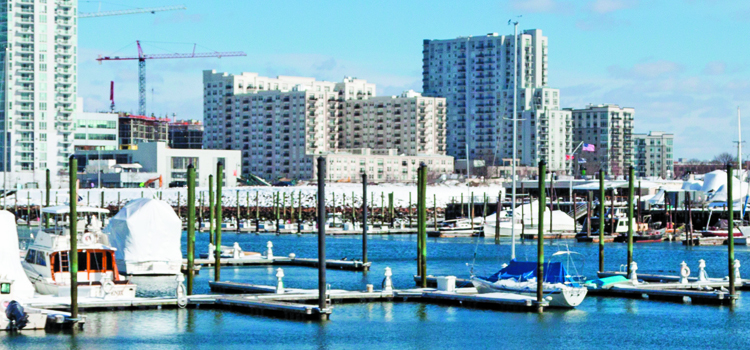
The second-largest city in Connecticut has nearly 135,000 residents. Stamford was already home to three Fortune 500 companies: Charter Communications, credit card provider Synchrony and United Rentals, the world’s largest equipment-rental company. It recently gained a fourth with the arrival of tobacco giant Philip Morris, which relocated its headquarters and brought some 200 jobs from Manhattan.
Sources: Axios, Boston Planning & Development Agency, Choose Stamford, Climate Reality Project, CT Insider, Federal Reserve, HuffPost, Maine Public Radio, Manchester Journal, MassLive Media, New Hampshire Employment Security, Stamford Advocate, The Boston Globe, The Josiah Bartlett Center for Public Policy, The Providence Journal

